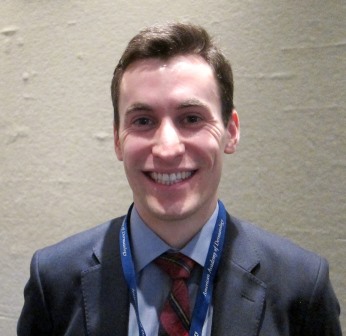User login
ORLANDO – A teletriage app significantly reduced the time between triage and evaluation by a dermatologist, helping a volunteer-staffed clinic for the uninsured see more patients and improve rates of accurate diagnosis and treatment.
Peter Chansky, a medical student at the University of Pennsylvania, Philadelphia, presented the data on a study of the app during a late-breaking research session at this year’s annual meeting of the American Academy of Dermatology.
The teletriage app AccessDerm, which is free to all AAD members, uses a photo of the dermatological condition, along with basic clinical and demographic information. The investigators found that with the app, the mean time from referral to teledermatology response was 1.4 days vs. 13.4 days for waiting to be seen in the next dermatology clinic (P less than .0001). Additionally, because the app requires the referring physicians to enter a differential diagnosis and a suggested treatment plan, it was established that diagnoses improved with teledermatology. Compared with self-reported primary care provider plans, the app led to an altered course of treatment in 95% of cases.
In all, 70% of cases were triaged via teledermatology without the need for an in-person evaluation, resulting in an average of 1.4 out of 8 appointments being saved monthly. This allowed the clinic to treat 18% more patients who needed in-person care, according to Mr. Chansky.
“Teletriage can be easily implemented in an underserved clinical setting, and provides an opportunity for dermatologists to make a significant and meaningful impact on the health care and outcomes of underserved populations,” Mr. Chansky said.
wmcknight@frontlinemedcom.com
On Twitter @whitneymcknight
ORLANDO – A teletriage app significantly reduced the time between triage and evaluation by a dermatologist, helping a volunteer-staffed clinic for the uninsured see more patients and improve rates of accurate diagnosis and treatment.
Peter Chansky, a medical student at the University of Pennsylvania, Philadelphia, presented the data on a study of the app during a late-breaking research session at this year’s annual meeting of the American Academy of Dermatology.
The teletriage app AccessDerm, which is free to all AAD members, uses a photo of the dermatological condition, along with basic clinical and demographic information. The investigators found that with the app, the mean time from referral to teledermatology response was 1.4 days vs. 13.4 days for waiting to be seen in the next dermatology clinic (P less than .0001). Additionally, because the app requires the referring physicians to enter a differential diagnosis and a suggested treatment plan, it was established that diagnoses improved with teledermatology. Compared with self-reported primary care provider plans, the app led to an altered course of treatment in 95% of cases.
In all, 70% of cases were triaged via teledermatology without the need for an in-person evaluation, resulting in an average of 1.4 out of 8 appointments being saved monthly. This allowed the clinic to treat 18% more patients who needed in-person care, according to Mr. Chansky.
“Teletriage can be easily implemented in an underserved clinical setting, and provides an opportunity for dermatologists to make a significant and meaningful impact on the health care and outcomes of underserved populations,” Mr. Chansky said.
wmcknight@frontlinemedcom.com
On Twitter @whitneymcknight
ORLANDO – A teletriage app significantly reduced the time between triage and evaluation by a dermatologist, helping a volunteer-staffed clinic for the uninsured see more patients and improve rates of accurate diagnosis and treatment.
Peter Chansky, a medical student at the University of Pennsylvania, Philadelphia, presented the data on a study of the app during a late-breaking research session at this year’s annual meeting of the American Academy of Dermatology.
The teletriage app AccessDerm, which is free to all AAD members, uses a photo of the dermatological condition, along with basic clinical and demographic information. The investigators found that with the app, the mean time from referral to teledermatology response was 1.4 days vs. 13.4 days for waiting to be seen in the next dermatology clinic (P less than .0001). Additionally, because the app requires the referring physicians to enter a differential diagnosis and a suggested treatment plan, it was established that diagnoses improved with teledermatology. Compared with self-reported primary care provider plans, the app led to an altered course of treatment in 95% of cases.
In all, 70% of cases were triaged via teledermatology without the need for an in-person evaluation, resulting in an average of 1.4 out of 8 appointments being saved monthly. This allowed the clinic to treat 18% more patients who needed in-person care, according to Mr. Chansky.
“Teletriage can be easily implemented in an underserved clinical setting, and provides an opportunity for dermatologists to make a significant and meaningful impact on the health care and outcomes of underserved populations,” Mr. Chansky said.
wmcknight@frontlinemedcom.com
On Twitter @whitneymcknight
AT AAD 17

